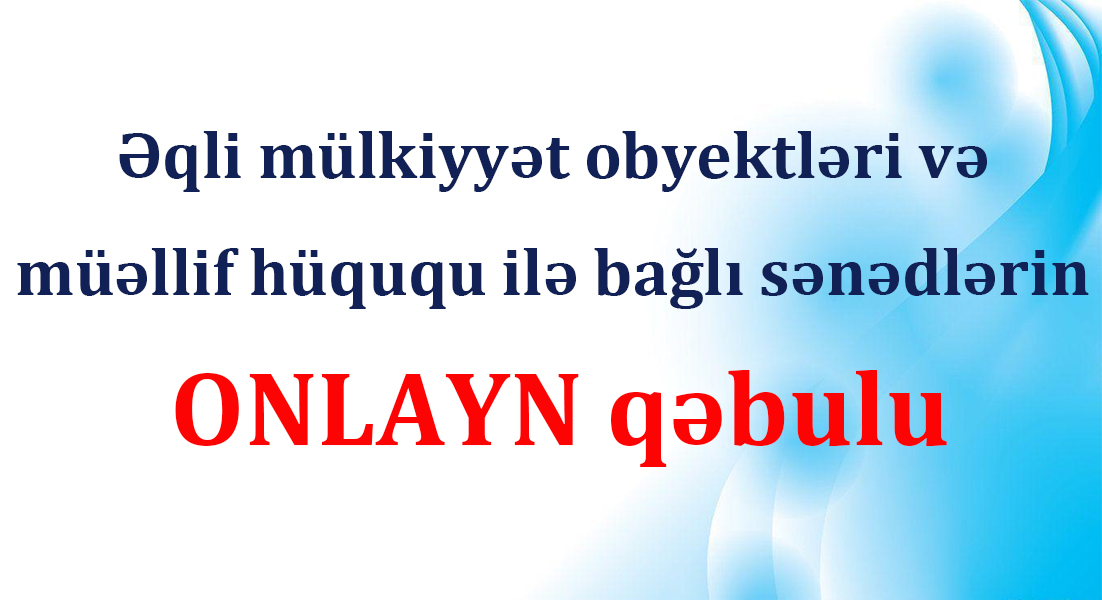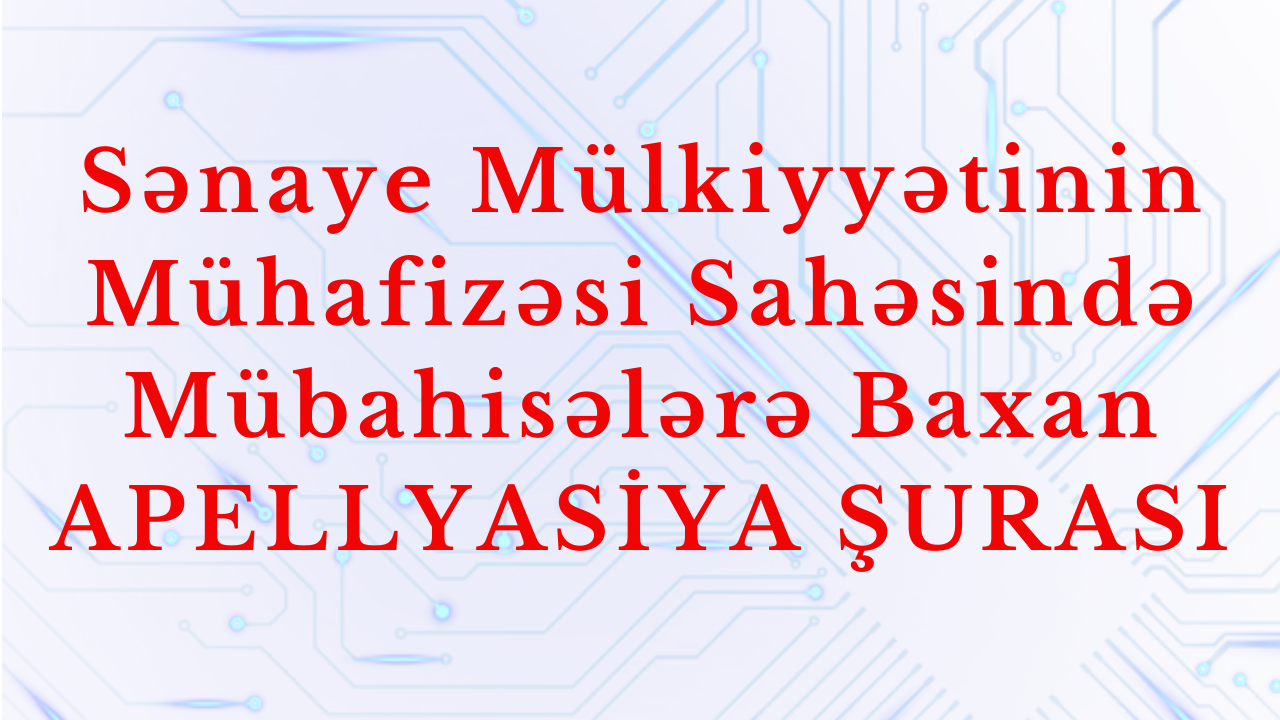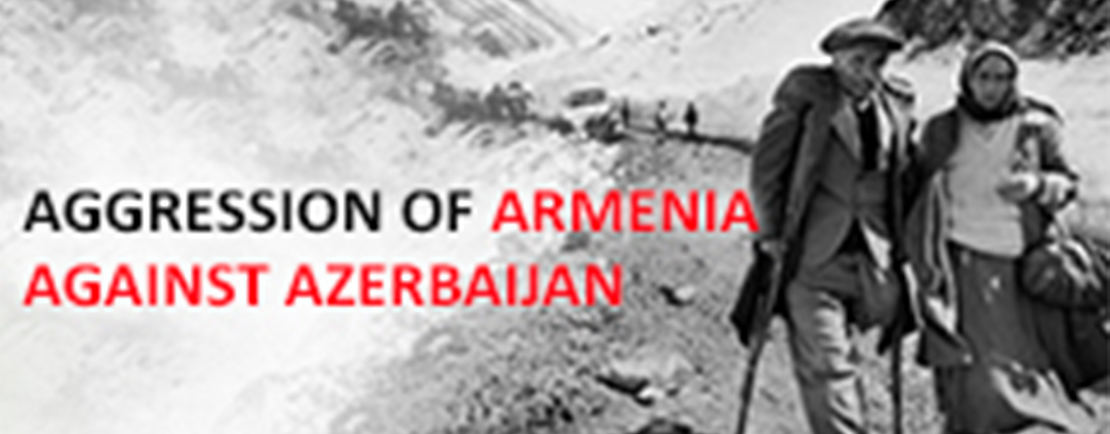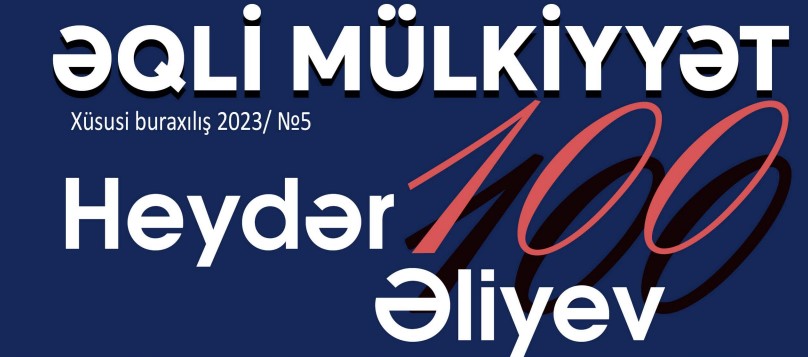Historical period when Armenian myths are destroyed, truth and justice prevailed
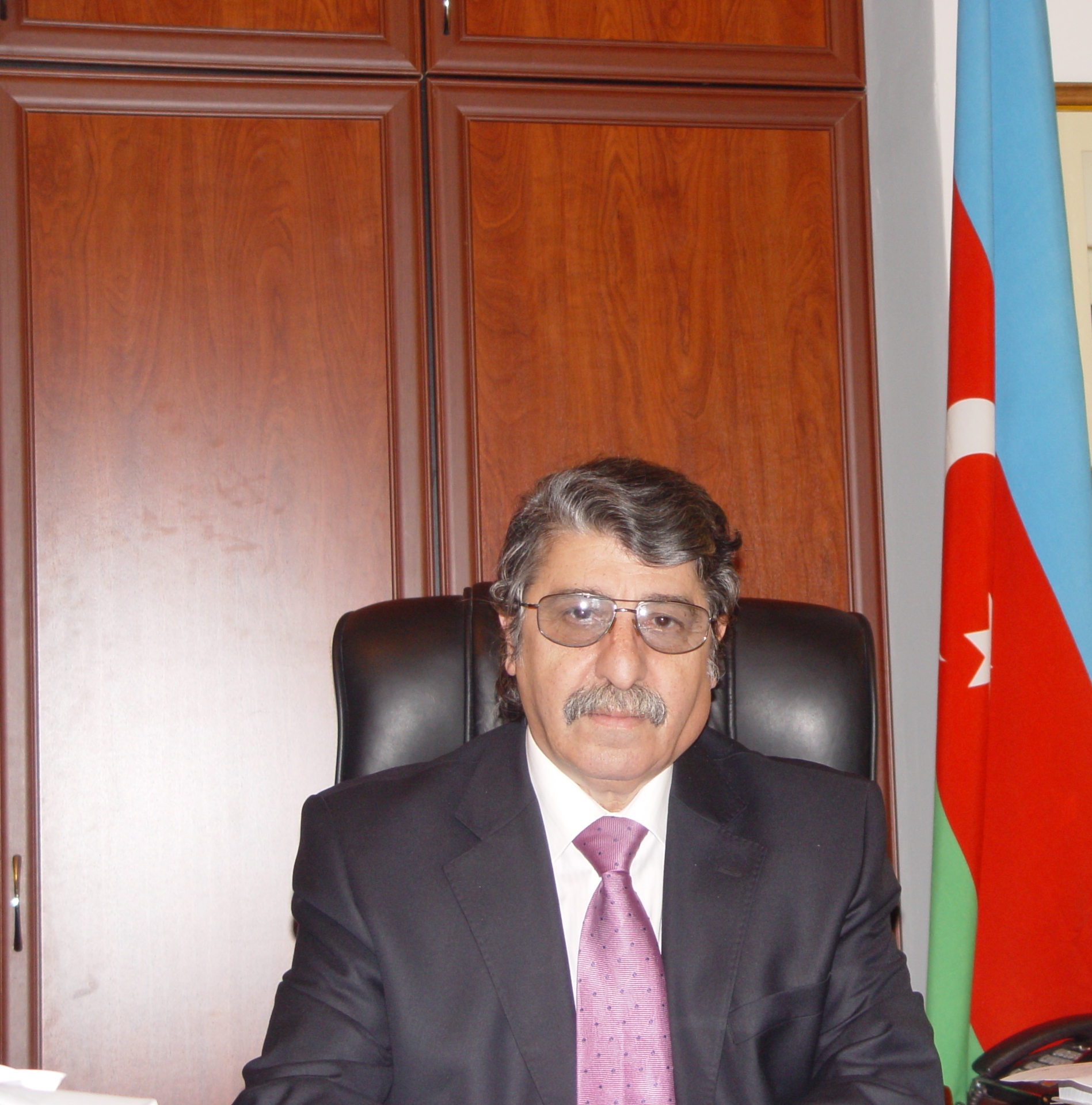
An article - "Historical period when Armenian myths are destroyed, truth and justice prevailed" by Kamran Imanov, Chairman of the Board of the Intellectual Property Agency of the Republic of Azerbaijan, dedicated to April 23 - "World Book and Copyright Day" was published in the "Azerbaijan" newspaper.
Historical period when Armenian myths are destroyed, truth and justice prevailed
The Azerbaijani nation is living in a historical period. Under the leadership of the Supreme Commander-in-Chief, the President of the Republic of Azerbaijan, the Azerbaijani army liberated the lands of Karabakh occupied by the Armenian troops and in fact outside the control of the Azerbaijani state. The invaders retreated in the face of the power of modern weapons, the heroism and courage, patriotism and motivation of Azerbaijani soldiers and officers. Faced with the threat of complete destruction of manpower and equipment, the occupiers were forced to surrender and sign a statement of capitulation, according to which other non-military areas were returned to Azerbaijan.
As the President of the Republic of Azerbaijan, Mr. Ilham Aliyev, said in his address to the nation, "we are currently living our special glorious history ... we are restoring historical justice ...". The soldiers of the occupying Armenian state, which established a mono-ethnic state, were expelled from our lands, thus dispelling many old and new Hay-Armenian myths, and even the creation of a mono-ethnic state did not help.
The essence of the insidious plans of the Armenians was that in the mono-ethnic environment, based only on fictitious facts in the Hay-Armenian space and distorting the political history and historical geography of other peoples, exaggerating the "role" of the Hay-Armenian nation, it was easier and more convenient to spread mythologies such as Hay-Armenian "exclusivity" "the first hearth of mankind", "Greater Armenia" among the population. Of particular note is the "distorted history of Nagorno-Karabakh" and the myth of the "invincible Armenian army" that has been ingrained in our brains for the past 30 years.
Before our eyes, our brave army melted the myth of the invincibility of the Armenian army in 44 days. The "incredible" and even "existential" motivation and fighting ability of the Hay-Armenians in the defense of our occupied lands behind this myth, as well as the arguments of the Armenian defense, such as entire minefields in the mountains and strong concrete fortifications, were thwarted. It must be so, because our work is the work of truth, the restoration of historical justice. The Azerbaijani state was able to do the impossible in Armenian thought, and thus created a brilliant example that will fall into the pages of world history textbooks.
Indeed, the historical period in which we live is a time when myths are shattered and truth and justice prevail!
It should be noted that according to the insidious plans, the consciousness of the ethnos, which remained and lived as the only nation in the Armenian state, had to take root more successfully and bear fruit in the fog of nationalism. Because those who disagree with false mythologies do not protest, other ethnic groups do not protest, no wave of protest is formed. As a result, political mythology triumphs, defines the ethnic landscape of the Hay-Armenian world, shapes the perception of external realities and behavioral mechanisms of the Armenian ethnos. The myths of "exceptionalism" and "suffering", ambitions and claims against other peoples are instilled in the minds of the people, shielding them from the natural alternative, while the myth of the "special mission" denies international law, the cornerstone of modern world-building. The government and the intellectual elite, which support and lead to such mythologies, eventually become victims and prisoners of these fabrications. The point is that a consciously developed ideology has difficulty in replacing the unconscious worldview that has taken root in the population. As a result, everyone falls into the trap of political folklore.
However, although political folklore and the fictitious worldview are based solely on domestic consumption, fictional paper theses are based on theoretical theses, far from the truth, fake fakes, and many false books and speeches. Myths are dispelled, reality is revealed.
The result of our great historical victory today is the destruction of fabrications. A clear example of this is the defeat of the myth of the "invincible Armenian army" by brave Azerbaijani soldiers and officers under the leadership of the Supreme Commander-in-Chief. Along with this myth, the myth of "Armenian motivation", ie exceptional courage in protecting the lands, was dispelled. Finally, the myth of a "nation ready for suffering, self-sacrifice" was shattered, as a nation of more than 10,000 fugitives was unable to defend the occupied territories.
The disintegration of these myths and the confirmation of what we say is not only in the invincible commander, as the Supreme Commander-in-Chief, but also in the intellectual superiority, courage and determination of the leader of Azerbaijan Ilham Aliyev compared to the leaders of the defeated country.
As the eminent philosopher and enlightener JJ Russon says, "there is nothing more dangerous than power in incompetent hands." Because such a government is useless and unsustainable, serving only its own interests, not the idea it embodies. Because, as life shows, the nation suffers the bitter consequences of the mistakes of such leaders and the nation has to pay. History and reality have shown that the leader's special responsibility stems from the fact that the fate of the state is on his shoulders. Because the head of state must always lead the country by making the right decisions to move the country forward, and this ability is the ability to choose, the ability to see the future. This ability comes from the intersection of politics and law. Our head of state gave us victorious nation's thoughts, brought pride and made us happy.
Pashinyans should not forget these.
Finally, the victory is a demonstration of the integrity, maturity, patriotism and spiritual strength of the Azerbaijani nation in the recent military events in the clashes with the Armenian nation. It is a demonstration of the extreme superiority of the tolerant, multicultural environment in our country compared to the nationalist mood in Armenia.
Today, a new socio-political situation has arisen in the region, and Azerbaijan has directed its efforts to restore the territories devastated by the barbaric occupiers. In fact, in these areas we encounter the destroyed material cultural heritage of the Azerbaijani people, monuments of Muslim and Turkic culture that have been destroyed or completely wiped off the face of the earth. There are many monuments and examples of Christian culture - churches, monasteries - in the liberated lands, which belong to the heritage of Caucasian Albania, whose inhabitants are one of the ancestors of Azerbaijanis and the legal successor of their lands is the Azerbaijani state.
The Azerbaijani state has always treated and protected its Muslim culture and pre-Islamic cultural heritage, including the Christian past, as the heritage of the Azerbaijani people. And from this point of view, it is not surprising that some circles hypocritically shout about the alleged destruction of Christian monuments in our lands. Moreover, since the Soviet era, especially during the occupation, most examples of the Christian past have been “manipulated” and manipulated by Armenian forgers in order to Armenianize them.
As for the Albanian Christian monuments, the historical truth is not in the reluctance of Azerbaijanis to preserve their former monuments, but in the systematic distortion of these monuments by Armenians, the destruction of old inscriptions and the engraving of new inscriptions that should become "evidence" of Armenian affiliation.
Because, as always, Armenian scientists and politicians are appropriating Albanian territories, spreading lies to the world on the basis of fake "sources" of Armenianism.
It would be appropriate to respond to their claims with the writings of the Armenian author F. Ekozyants (Ф.П.Экозьянц. «Исраэль Ори. Ларец Пандоры». Книга 1). The book, as the author notes, is "about a history of mystification" and is presented by Armenian researchers, led by the adventurous I. Ori, as a national liberation movement against the colonialism and domination of the Safavid and later states. The essence of the mystification is that we are not talking about the liberation movement of the Armenian people, but about the involvement of the Karabakh kings in their plans (I. Ori is the son of the melik). At the same time, we cannot talk about the liberation movement, because I. Ori, who has become a "national hero", is a person who works for his own goals.
This fabrication, as Ekozyants writes, has its place among other frauds. A quote from Armenian author: “Until the beginning of the 18th century, the written history of the Armenian people was not rich and consisted of rare notes about Armenia and Armenians. And this was mainly written by European authors who were far from Armenia and its inhabitants. However, the eighteenth century suddenly turned into an explosion of historical "discoveries" and many Armenian kingdoms unknown to anyone before the "imaginary world" were revived. And these became the result of the work of an army of scribes, who even carried their pens around Noah's ark, to the mythical cradle of human civilization”.
Ekozyants emphasized that "the formation, or rather the miraculous" discovery "of all these" sources "appeared in the period from the eighteenth to the twentieth century, although in the eighteenth century no one had any information or knowledge about them ...".
But who were the first to "enrich" Armenian history, and when did the epoch of falsification of Armenian history, full of many mythologies, begin?
The answer of the Ekozyants is clear: “Following the death of Israel in 1711, the Order of the Mkhitarists began to function on the island of St. Lazarus near Venice in 1712. And less than 100 years later, as a result of their "efforts" alone, the history of Armenia and the Armenian people has been "enriched", "improved" and ready to "become science" with tens of thousands of "ancient" manuscripts.”. So, in the first step, this community, consisting of 12 refugee monks, was soon enriched with a printing press and library and turned into a full-fledged monastery complex. On the basis of the first few books and manuscripts they brought with them, a few monks, who in 1857 had already become thousands of "ancient manuscripts," as Ekozyants mockingly noted, "miraculously surpassed all ancient and medieval scholars in knowledge."
The fabrications and falsifications in the forged manuscripts began to be used by Armenians and their supporters, and G. Ezov, a well-known Armenian publicist and translator, was among the first to spread lies. Ezov obtained an unknown number of "new" documents from most European and Russian archives, most of which had not been published before him, and in his book “Сношения Петра Великого с армянским народом” (Saint Petersburg, 1898) turned the adventurous Orin into a brave national hero of the Armenian people who opposed the Muslims."
Thus, the "history of the Armenian people", which was full of forgery, began to spread, turning into thousands of fake "historical works" unknown to the world, with the exception of a few original texts, which were originally edited and inspected. It should also be noted that the originals of these counterfeit works did not exist in the Armenian language and could not exist.
Here we will leave the interesting and true views of Ekozyants and refer to the work of another scientist of Armenian origin. We are talking about the most famous American Armenian scholar, professor of the University of Michigan and Chicago Ronald Gregory Suni (Ronald Grigor Suny, “Looking Toward Ararat. Armenia in Modern History”, Indian University Press, 1993). Talking about the Mkhitarists in his work named “Looking Toward Ararat. Armenia in Modern History”, the scientist emphasizes the special role of the clerical elite in the formation of Armenian history. He pointed out that (quoted) "the activity of Mkhitarist monks actually led to the establishment of the foundation of Armenian nationalism ..." and "in the development of the later national tradition, new aspects were introduced into the writings of those who served the church, and the writers revisited the themes in the texts and created works around them."
What topics are we talking about?
The answer to this question by Syuni is as follows, citing another well-known American scientist Robert Thompson: “...Although Armenia is a small country, it is very old and a lot of historical work has been done here (M.Khorenatsi), this nation adopted Christianity before others, and this is the rule of God (Agafangel), these people are loyal to their religion and tribal traditions and are ready to sacrifice themselves for suffering (Elishe)”. These three nationalist views are among the Armenian fictious thesises we have mentioned.
In conclusion, I would like to dwell on the accusations of Armenian historians to Western historians about the falsification of Armenian history and answers they got.
Armenian historian Armen Ayvazyan in his work named "Освещение истории Армении в Американской историографии (Критический обзор)" accuses a number of well-known Western Armenians and Caucasians, including Armenians, professors Ronald Grigor Suni, Robert Thompson, James Russell, Richard Hovhannisyan and others, of deliberate falsification of Armenian history. The main argument is "to question the modern history of the Armenian plateau as a source of formation of the Armenian people, to question the scientifically substantiated claim and insist on the resuscitation of the version that Armenians were rejected by science instead." Based on the presentations of Azerbaijani and Turkish scientists. It is noted that “Armenian culture is shown in the works of these western scholars only in the form of a sequence of borrowings from Iran, Byzantium, Assyria, Arabia and other cultures. Historical Armenia is presented as a decentralized, weak country, becoming a toy in the hands of the Iranian and Roman empires”. This degrades the 5,000-year-old Armenian history, “whereas during the Hayasa, Urartu and Ervanduni kingdoms the Armenian army numbered in the tens of thousands, and in the reigns of Artashesid, Arshakuni and Bagratuni (of Persian origin) with 100,000 to 200,000 warriors”.
The position of these authors was supported by academicians Grachik Simonyan, Manvel Zulalyan and others. In response, at a conference on October 4-6, 2003, entitled "Rethinking Armenian Studies: Past, Present, and Future," a number of Western-based scholars at Harvard, Cambridge, and Massachusetts provided relevant answers to Hay-Armenian chauvinist and nationalist science. Thus, professors Bardakchiyan, Russell, Robert Hussein noted that in the Armenian studies of the Republic of Armenia, "xenophobia, ultra-nationalism," science "has become a dominant trend and aimed at self-destruction."
According to Robert Grigor Syuni, "Armenian scientists were mired in nationalist thinking".
The reasons for this, as noted by a prominent scientist, are "the lack of roots of the Armenian nationalism that exists and the replacement of historical knowledge with fiction.". “...While these people are usually proud of their historical past and heritage, they have no idea”.
It is difficult to add anything to what is said, and perhaps there is no need. But we want to convey an idea: "[Armenian] scientific thought in historiography is being subjected to intellectual aggression and, funded by the US State Department, is leading to a distortion of Armenian history since ancient times," Regnum was quoted as saying. This information is briefly based on the joint statement of a number of Armenian historians at the International Congress of Armenian Scholars in Yerevan.
Thus, the approach of well-known Western scholars, who are objective, including those of Armenian origin, has not been able to influence the national science of Armenian studies in the swamp of nationalism. Therefore, the "New National Security Strategy of Armenia" presented by Pashinyan, who took advantage of this swamp of nationalism, as the aide to the President of the Republic of Azerbaijan Hikmet Hajiyev rightly noted, "is like a fake history textbook. And this document, full of further fabrications, pours water into the mill of Armenian nationalism and is delivered to the general public."
Armenian scholars and politicians who declared Albanians Hay-Armenians, appropriated the historical territory of Albanians and Armenianized their tangible and intangible cultural heritage, and did not hear the voices of Armenian and Western scholars, would do well to pay attention to the writings of our famous Pavel Florensky instead of fiction and myth.
Let's refer to the very valuable thoughts of Pavel Florensky, a resident of Yevlakh, Azerbaijan an Albanian by his mother side Olga (Solomiya) Saparova, about Albania. Pavel Florensky was a prominent theologian, priest, and mathematician who studied his genealogy, and the results of his research were reflected in “To My Children. Memories of the past " (M., "Moskva fəhləsi", 1992-ci il) [«Детям моим. Воспоминания прошлых дней». М., «Моск. раб.», 1992 г.].
The lines from Florensky date from 1916-1925. It should be noted that Alexander Florensky, the father of P. Florensky, an engineer-builder of the Transcaucasian Railway, was an Orthodox Russian. His mother, O.Saparova, born in 1859, was a descendant of famous Karabakh maliks (The period after the cunning appropriation of the Albanian Church and its annexation to the Armenian Church).
P. Florensky refers to his Albanian lineage as "... one of several tribes of Armenians who are mixed and ethnically badly mixed", and the Armenians themselves called this branch of the tribe "Albana". It is a branch of the oldest inhabitants of the Mediterranean basin, called the Mediterranean race. As an ethnic group, the history of this race goes back to Homer's Greece. Its remnants gave the purest of the most ancient tribes of the Medes and Phrygians. This generation, which reached the depths of the Northeast, was partially mixed with the surrounding population of Ararat, and some survived as an ethnic group here.”
Elsewhere, he expresses his opinion directly: "On my mother's side, I have the blood of the Hittites". It should be noted that this result is completely consistent with M. Kalankatukski's views on the origin of the Albanians ("History of the Albanians") and the well-known historical evidence of the migration of the Hittites to Cyprus and the Caucasus.
Albanian chronicler M. Kalankatukski noted: "Separating from them, from the Kittites, the sons of Japheth, the Cypriots went to the pagan islands, and the inhabitants of the northern lands were from the Cittite tribes, from whom the Aluans were born." (M.Kalankatukski, I book, 2nd chapter) [Kittim (Hirokitiya) is the ancient name of Cyprus and according to its ancient history it was conquered by the Khatis in the IV millennium BC.].
P. Florensky draws the main conclusion in the following notes: " Karabakh Armenians are not Armenians, they are a special tribe... In ancient times, they were called Albanians, and Armenians called them Akhavan ". “They first lived near Lake Goycha. Expelled from the south, their legendary ancestors moved to Karabakh with their princes bearing the surname of the Baylar. "
It should be noted that the Saparov family is also descended from the Baylarovs living in Georgia. Florensky emphasizes this in his Memoirs: Baylar - Beylarov's descendants descended from several generations who settled in modern Georgia and did not return to Karabakh, including the Saparovs, who were "extremely cultured and very rich.".
Later, in "Notes on my mother", which he began to write in 1915: " The main genealogy of Malik-Beylarovs is mentioned in the first pages of the IX century Talysh Gospel. The Bible was kept in the church of the Malik-Baylarovs, on Mount Khorek, where the ruins of their estate still remain...", they were stolen by the villagers, " The harsh orders of the Armenian Catholicos and even the threat of expulsion from the church were not strong enough to force them to return to the [peasant] church...". Another note on the history of the Malik-Baylarovs is in the Bolnisi Bible preserved in the church of Bolnisi village.”.
And finally, in "Notes on the biography of P.G. Saparov" (about 1923): “The family's history is recorded in the local Shulaver Manuscript Bible. This Bible was re-closed by Pavel Gerasimovich Saparov...” [Florenskinin babası, anasının atası].
The above quotations by P. Florensky are very important in terms of understanding the geography of the Saparovs, a noble Albanian family descended from the same Albanian kings.
First, we see that P. Florensky's ancestors lived in Karabakh after being relocated from the Goycha Lake region. As is known from the sources, Karabakh is the territory of Caucasian Albania. The genealogy, written in the ninth century, is based on the Gospel (Bible) of Talysh. As it is known, Talysh is a settlement (village) of Tartar region of Azerbaijan (Mardakert region in 1921-1991). The residence of the Beylarov kings was located here in 1716-1750, and P. Florensky's mother side come from them. It should be noted that the village, previously occupied by the Armenian armed forces, was returned to the control of Azerbaijan on October 3, 2020.
Second, in the 16th century, Florensky's ancestors moved with their villagers to the Bolnisi settlement in the Tiflis province, bordering Marneuli in the Kvemo-Kartli region of Georgia (now called Borchali), where Azerbaijanis now live. P. Florensky also mentions the Bible, which records the history of generations in Schulaver. Shulaver is a historical name and is located in the Marneuli district of the Kvemo-Kartli region (Borchali) of Georgia.
It follows from the above that the geographical area mentioned in P. Florensky's "Memories" covers Karabakh and Borchali (now in the border of Azerbaijan, Georgia and Armenia).
These were once the historical lands of Caucasian Albania.
The creators of the next Armenian myths must think about whom to believe: their fabrications about Albania and Albanians, or the writings of Pavel Florensky, a well-known Russian scientist and theologian who was Albanian by mother side.
Kamran Imanov
Chairman of Board of İntellectual property Agency


